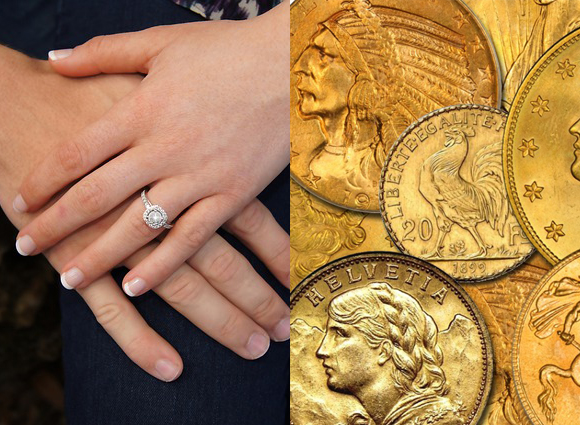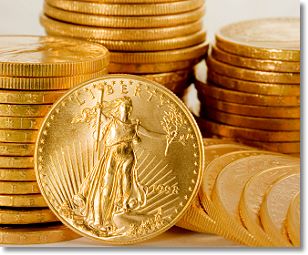When it comes to precious metals and gems, two terms that are often used are Karat and Carat. These two terms are often confused with each other, but they have entirely different meanings. This article will dive deep into what Karat and Carat mean and their differences.
Ever wondered what the difference is between karat and carat? The terms are often used interchangeably, but technically they are two different measures of two different things.

A brief history lesson
The use of Karat and Carat dates back to ancient times. Karat is believed to have originated from the word “carob,” a type of seed used as a standard for measuring the weight of gold in ancient times. Carob seeds were known for their consistent weight and size, making them ideal for use as a measurement standard.
The Carat system, on the other hand, is believed to have originated in ancient India, where diamonds and other gemstones were weighed using the seeds of the Carob tree. Over time, the Carat system became the standard for measuring the weight of diamonds and other gemstones worldwide.
The Karat and Carat systems are still widely used in the jewelry industry and are critical in determining the value and quality of precious metals and gemstones.
Karat
When describing gold coins or jewelry, three specifications are usually provided: weight (in troy ounces), dimensions, and fineness/purity. Gold fineness, or purity, is the ratio by weight of gold to any base metals (more common, inexpensive metals) or impurities in a particular piece, expressed in parts per 1,000. It may also be expressed as a decimal (e.g. “0.999 pure gold”) or percentage (e.g. “99.90% pure gold”).

Karats are another way of expressing gold purity. Using a gold coin as an example, karats are calculated by multiplying the mass of pure gold in the coin by 24 then dividing by the total mass of the coin. One karat represents 1/24 of the whole, so 24-karat gold is referred to as “pure gold”. A 22-karat gold coin is 22 parts gold and 2 parts base metals or impurities.
The most common purities used for gold products are:
- ≥99.90% = 24 karat (Canadian Gold Maple Leafs, American Gold Buffalos, Austrian Gold Philharmonics)
- 91.60% = 22 karat (South African Krugerrands, American Gold Eagles)
- 83.30% = 20 karat
- 75.00% = 18 karat
- 62.5% = 15 karat
- 58.50% = 14 karat
- 41.70% = 10 karat
- 37.50% = 9 karat
- 33.30 = 8 karat
Arguably the purest gold coin ever produced was refined by the Perth Mint in 1957 and had a purity of 0.999999 (99.9999%).
Carat

In American English, karat is for gold and carat is for gemstones. In many other countries, karat can be spelled as carat and vice versa, but the two separate meanings still exist.
Etymology
According to the Online Etymology Dictionary, karats as a measure of gold purity came before carats as a measure of diamond weight. The word carat (and its variant spelling karat) traces its origin to the mid-15th century from the Arabic word qirat, meaning “fruit of the carob tree” and also “weight of 4 grains,” and from the Greek word keration, meaning “carob seed,” and also the name of a small unit of weight. At the time, carob beans were a common measure of weight in small quantities. Keration was the Greek equivalent of the Roman siliqua, which equaled 1/24 of a gold solidus (Late Roman Empire coin) of the emperor Constantine. Appropriately, karat meant “a proportion of one twentyfourth” and became a measure of gold purity in the 1550s. Carat as a measure of diamond weight emerged in English in the 1570s.
Karat is all about gold and other precious metals.
The Karat system is primarily used to measure the purity of gold and other precious metals. Pure gold is 24 Karat, meaning it is 99.9% gold and very soft and malleable. Therefore, it is not commonly used in jewelry making and is often alloyed with other metals like silver, copper, or nickel to enhance its durability.
The Karat rating of gold is expressed in a fraction of 24, where 24 Karat is pure gold, and lower Karat ratings indicate a lower percentage of gold in the alloy. For example, 18 Karat gold contains 75% gold and 25% other metals.
The Karat system also measures the purity of other precious metals like silver and platinum. Like gold, pure silver is too soft and malleable to use in jewelry making and is often alloyed with other metals to enhance its durability.
The Karat rating of silver is expressed in a fraction of 1000, where 925 Karat silver is the most common alloy used in jewelry making. It contains 92.5% silver and 7.5% other metals like copper, which enhances its durability.
The same is valid for platinum, often alloyed with other metals like copper and cobalt to enhance its durability. The Karat rating of platinum is expressed in a fraction of 1000, where 950 Karat platinum is the most common alloy used in jewelry making. It contains 95% platinum and 5% other metals.
The Karat system is essential when investing in gold, silver, platinum, or other precious metals. The Karat rating of an item can affect its value, durability, and overall quality.
The big differences
The primary difference between Karat and Carat is what they measure. Karat measures the purity of gold and other precious metals, while Carat measures the weight of diamonds and gemstones.
Another significant difference is how they are expressed. For example, Karat is expressed in a fraction of 24 or 1000, while Carat is expressed in weight, with one Carat equaling 0.2 grams.
The Karat rating of gold, silver, platinum, or other precious metals can significantly impact their value and quality. A higher Karat rating indicates a higher percentage of pure gold or other precious metal in the alloy, making it more valuable.
In contrast, the Carat weight of diamonds and gemstones is only one factor that affects their value. Other factors like color, cut, and clarity are critical when evaluating their worth.
Why do these differences matter?
Understanding the differences between Karat and Carat is crucial, especially if you are in the market for buying or investing in gold, silver, platinum, diamonds, or other precious metals and gemstones.
When purchasing jewelry, it is essential to know the Karat rating of the item, as it can affect its value, durability, and overall quality. A higher Karat rating does not necessarily mean a better quality piece, as it may not be as durable as a lower Karat rating.
On the other hand, when buying diamonds or gemstones, it is crucial to consider the Carat weight and other factors like color, cut, and clarity. For example, a high Carat weight diamond may be less than a smaller diamond with better color, cut, and transparency.
The impact it has on investment in gold and precious metals
The Karat system plays a significant role in investing in gold and other precious metals. The Karat rating of gold can affect its value and quality, making it an essential factor to consider when investing in gold.
Investors may choose to invest in higher Karat gold, such as 22 or 24 Karat, as it contains a higher percentage of pure gold and is more valuable. However, higher Karat gold is less durable and more prone to scratches and dents.
In contrast, lower Karat gold, such as 18 or 14 Karat, is more durable and less likely to scratch or dent but is less valuable. Nevertheless, investors may invest in lower Karat gold for its durability and lower cost.
The Carat system also plays a role in the investment in diamonds and other gemstones. The Carat weight and other factors like color, cut, and clarity affect the value of diamonds and gemstones.
Investors may choose to invest in high-quality diamonds and gemstones with excellent color, cut, and clarity, even if they have a lower Carat weight. These diamonds and gemstones may be more valuable in the long run than those with a higher Carat weight but lower quality.
Understanding the differences between Karat and Carat is essential when buying or investing in gold, silver, platinum, diamonds, or other precious metals and gemstones. The Karat system measures the purity of gold and other precious metals, while the Carat system measures the weight of diamonds and other gemstones. While Karat plays a crucial role in determining gold’s quality, value, and durability, Carat weight is just one of several factors that influence the value of diamonds and gemstones.
When buying or investing in gold, it’s essential to know the Karat rating of the piece. A higher Karat rating means a higher percentage of pure gold in the alloy, which can make it more valuable, but also less durable. Conversely, a lower Karat rating can mean a lower cost and more excellent durability.
Carat weight is just one of several factors to consider when investing in diamonds and other gemstones. A high Carat weight doesn’t necessarily mean a high-quality diamond or gemstone. Other factors like color, cut, and clarity also plays a significant role in determining their value.
Therefore, it’s essential to research before purchasing or investing in gold or precious stones. By understanding the Karat and Carat systems and the other factors that affect their value, you can make more informed decisions that align with your investment goals and budget.
Karat and Carat are essential terms used in jewelry and precious metals. While they measure different things, they both significantly impact the value and quality of the materials they measure. Therefore, by understanding the differences between Karat and Carat, you can make more informed decisions when purchasing or investing in gold, silver, platinum, diamonds, or other precious metals and gemstones.
Purchase 22- or 24-karat gold coins from American Bullion
American Bullion offers 22-karat American Gold Eagle Coins, as well as 24-karat Canadian Gold Maple Leafs, American Gold Buffalos, and Austrian Gold Philharmonics. We can help you with either purchasing them for direct delivery to your home or adding them to your IRA or former 401(k). Call us today at 1-800-326-9598 to get started.
The post Karat vs. Carat: What’s the Difference? first appeared on American Bullion.Original post here: Karat vs. Carat: What’s the Difference?
No comments:
Post a Comment